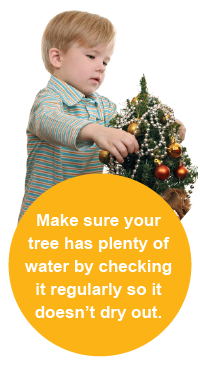Child Safety on Thanksgiving Day
The Thanksgiving holiday does not get a lot of attention over child safety matters, especially compared to holidays like Christmas or the Fourth of July. Yet turkey day does come with a few significant safety hazards that could spoil your family's fun. Here are some tips that will help ensure you have a happy and safe thanksgiving.
Thanksgiving safety risks:
1. On Thanksgiving day there is an increase in child accidents of all types, particularly poisoning.
2. Thanksgiving presents an increased risk of fire dangers and burns from cooking.
3. There is the potential for food poisoning
4. Drunk driving deaths spike around the Thanksgiving holiday.
Keeping children and family safe on Thanksgiving day:
1. Focus on child supervision. The biggest threat to kids on Thanksgiving day is that you often get a combination of visiting family members (which means preoccupied adults) and children who are left to their own devices, frequently in the strange and new environment of a relative’s home. Add to this mix the hustle and bustle of adults preparing extravagant meals, and you get a recipe for accidents. So don't let supervision lapse on Thanksgiving day. If possible, assign a particular set of adults to monitor the children. This ensures others don't presume that someone else is watching them, only to have it turn out that everybody thought someone else was watching them. Also employ older kids to help monitor the younger ones, and make sure they know what safety risks to watch out for. (Read them our safety book for kids: What Bigger Kids Can Do)
2. Child poisonings tend to spike on Thanksgiving, since relatives tend to be visiting or children are staying over at a relatives house, where childproofing is often lax. Medication carried in purses or suitcases is often a source. So if you have relatives over, ask them at the door if they have any medication with them, and store it in a locked cabinet. If visiting a relatives house, ask them where any poisonous items are kept so that you can steer your children away.
3. A hidden source of danger on Thanksgiving comes from those who cook their turkey by deep frying it. Every year, firefighters respond to several thousand house fires caused by families deep-frying their turkey. So if you decide to cook your turkey this way, do so safely: Do it outside whenever possible, and have a grease-fire rated fire extinguisher on hand to put out a fire should one start. (Remember that water will make a grease fire bigger, not put it out)
4. Monitor the drinking of all your guests, and do not let anyone get behind the wheel while intoxicated. Keep alcoholic beverages in a separate area from kids drinks, so that kids don't accidentally grab the wrong one.
How to safely cook a holiday Turkey
To ensure that your Thanksgiving feast does not turn into a nightmare of regret a few days later, follow these simple steps for safely cooking your holiday turkey:
1. The safest way to thaw your turkey is in the refrigerator. Putting it in a sink with cold water can give any bacteria that may exist a chance to grow. Give your turkey plenty of time to thaw - frozen turkeys are a common source of food borne illness, since they may result in uneven cooking that leaves raw spots where bacteria can survive.
2. Cooking the turkey thoroughly is the only way to destroy potentially harmful bacteria. The oven should be set to a minimum temperature of 325 degrees Fahrenheit. Simmering a turkey overnight at lower temperatures may result in food-borne illness.
3. You should cook a whole turkey to the point that a food thermometer registers at least 180 degrees Fahrenheit in the innermost part of the thigh. Don't rely solely on a "pop-up" temperature indicator that came with the turkey. Double check it with a food thermometer in several places.
4. If cooking a stuffed turkey, check the temperature of both the stuffing and the turkey. Remember that the raw juices of the turkey have leached into the stuffing, making it a potential source of food poisoning, too. So check the temperature of the stuffing and don't remove the turkey from the oven until the stuffing reaches 165 degrees Fahrenheit. Or simply cook the stuffing in a separate casserole tray, which is safest.
5. When it's time to pack up the leftovers, de-bone the turkey and separate it from the stuffing. Refrigerate them both in shallow containers. The safe storage time on leftover turkey kept in the fridge is around 4 days. Beyond that, you're taking your chances with it.
 It’s the holiday season again, a time when we enjoy festive meals with family and friends, deck our halls with colorful decorations and listen to squeals of delight as our children open their brightly-wrapped presents. To help ensure your kids have fun and stay safe this holiday, here are a few tips to remember.
It’s the holiday season again, a time when we enjoy festive meals with family and friends, deck our halls with colorful decorations and listen to squeals of delight as our children open their brightly-wrapped presents. To help ensure your kids have fun and stay safe this holiday, here are a few tips to remember.








